How one Indian community turned a barren hill into an evergreen forest land
Jamini Mohan Mahanty is out for a morning walk every day. At 91, he is hale and hearty. A resident of Jharbagda village in Purulia district, West Bengal, Mahanty thanks the “green mountain” in his village for having added some extra years to his life.
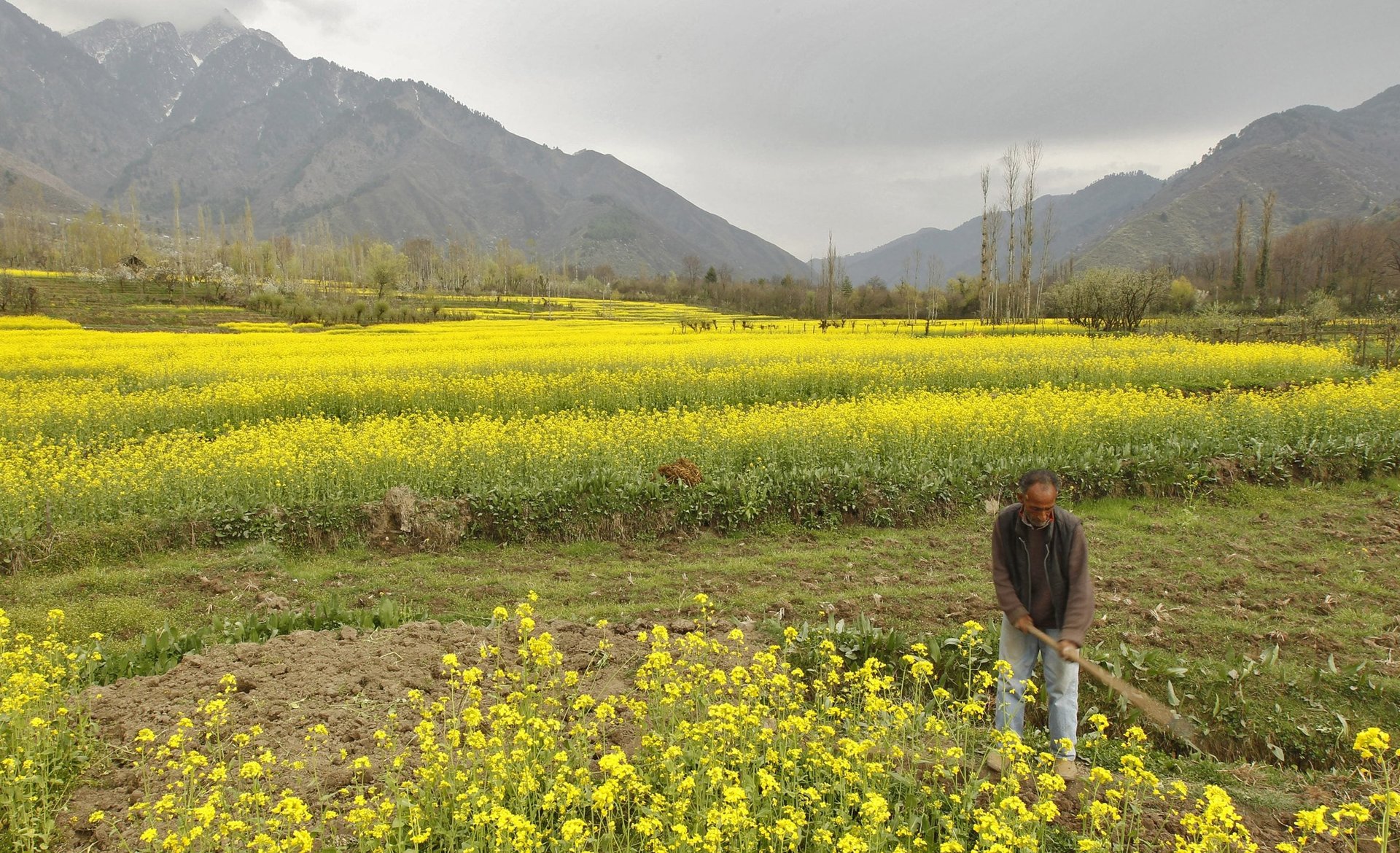

Jamini Mohan Mahanty is out for a morning walk every day. At 91, he is hale and hearty. A resident of Jharbagda village in Purulia district, West Bengal, Mahanty thanks the “green mountain” in his village for having added some extra years to his life.
“I could have died long ago but the green mountain has given me a fresh lease of life. It has made the environment clean and pollution-free. It really energises my soul to see birds chirping and rabbits hiding in the bushes. I come inside the forest everyday to have a brief rendezvous with nature,” he said, while resuming his walk with the help of a stick.
A few metres away, the mountain stands tall covered with extensive greenery and rich in biodiversity. The mountain exemplifies the collective efforts and hardships of the villagers. As they were grappling with depleting groundwater levels, harsh summers and trouble accessing firewood for fuel, the villagers realised that their pressing problems could only be solved by nature. Over the years, deforestation for firewood had depleted the green cover and the villagers decided to regreen the mountain.
Over nearly 20 years the community has transformed a barren mountain and its adjoining land, into an evergreen man-made forest.
Tapas Mahanty, a resident of Jharbagda in India’s eastern state, recollects the time, two decades ago, when extreme summers and water shortage made life difficult for the then 30,000-odd people residing across 20-21 villages surrounding the mountain. “We were facing severe water scarcity woes because of depleting groundwater levels. Women had to walk for around a kilometre to arrange drinking water as men were out for work. There were often skirmishes and fights over sharing of water at the village taps. It disturbed the harmony of the village,” she said.
Apart from water woes, life also became difficult because of strong winds in summers that spread the heat from the barren mountain. “There was no green cover that could have obstructed the flow of hot and humid winds. Soil erosion from the mountain during rains dirtied the ponds and also affected the farming. It became difficult to live in the villages located close to the mountain and people began to think of migration,” she added.
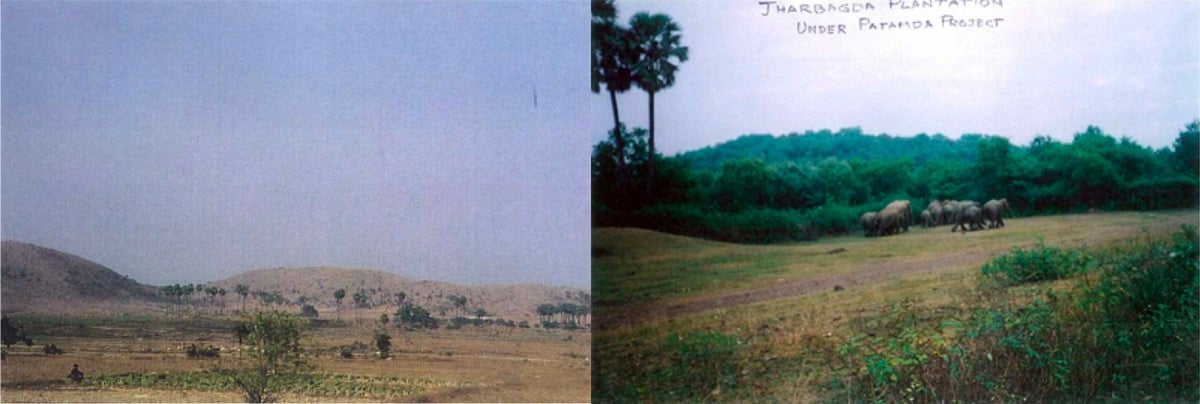
Long walk for firewood
Another major problem that villagers, especially the women faced was the near absence of firewood as there were hardly any trees, “We had to walk for three to four kilometres for firewood and the entire day was lost in the travel. It was also risky and cumbersome for the women to walk for such a long distance carrying the firewood on their heads. Besides, some couldn’t afford the money required to buy firewood for fuel,” said another villager.
Villagers realised that turning the mountain green could save them from the torment of inclement weather coupled with water shortage issues. But it was easier said than done as the mountain spread across 376 acres of land and required extensive labour and funds for plantations.
An NGO involved in nature conservation came to their rescue. The Tagore Society For Rural Development (TSRD), a non-profit engaged in rural work, agreed to do the plantation work on the entire stretch while the community was given the responsibility of maintaining and protecting the green cover. “A group of villagers contacted us and told about the problems they were facing. We were overwhelmed by their passion to grow a forest. We then decided to do the plantation,” said Prahalad Chandra Mahato, 70, senior employee of the NGO.
Subsequently, in 1999, a village committee involving 60 members of Jharbagda village of Manbazar-1 block was formed for plantation at a community land of around 300 acres.
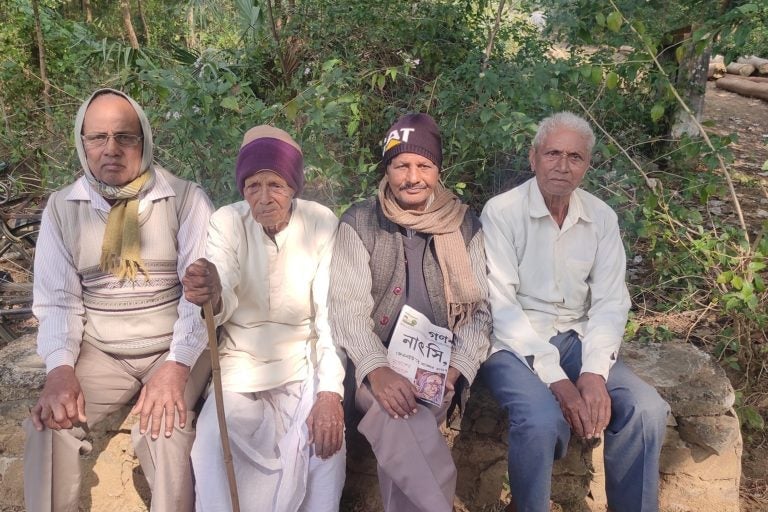
Another 67 acres of land was added in 2001 when four villages, Kumardih, Birsinghdih, Cheliama and Radhamadhobpur, also joined hands. Committee members went up to 90. Villagers named it Makino Raghunath Mountain in memory of two environment enthusiasts, Saiji Makino, a Japanese professor who taught at Visva Bharati University at Bolpur Santiniketan and was involved in creating awareness about plantation among the locals and Raghunath Mahanty, a well-known local resident.
Under a Japanese government-supported greening initiative, the plantations began in 1999 and continued till 2002. “During the course of three years, over 326,000 trees of 72 varieties including fruits, medical herbs and timber wood were planted in the mountain stretch and the adjoining land. Labourers were employed for plantation but villagers also worked voluntarily as they were passionate and wanted to mitigate the crisis,” added Mahato.
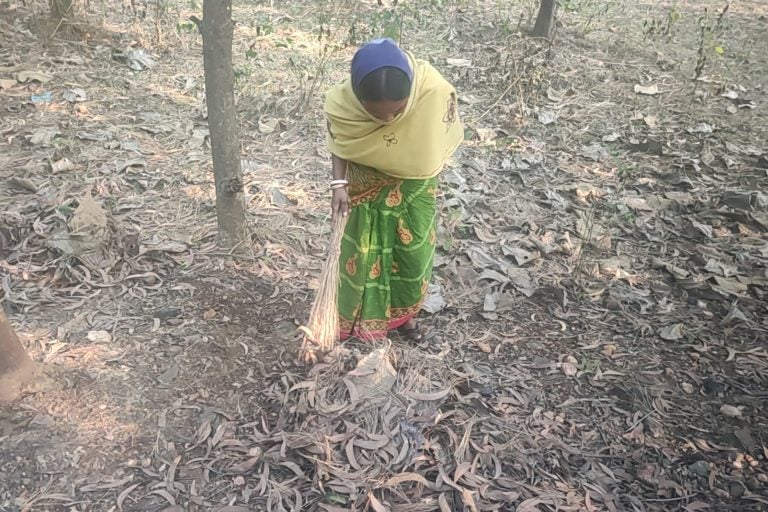
The stretch turned green within a few years
Within a span of a few years, the landscape, starting with five villages started changing. “The first visible sign was the easy availability of firewood for fuel. The dried leaves that fell from the trees were collected by us and used as fuel. It not only saved us from the ordeal of walking for several kilometres but also reduced our expenditure on buying wood for fuel. It encouraged us to protect the forest and shoo out anyone trying to destroy it,” said Kalyani Mahanty, 40, a homemaker in Jharbagda.
The forest also led to an increase in the groundwater level and brought down the constant quarrels among villagers, “The groundwater level that had depleted to 40-50 feet (and went down even more in summers) became normal and was available at 15-20 ft. The easy availability of water brought peace to the village,” she added.
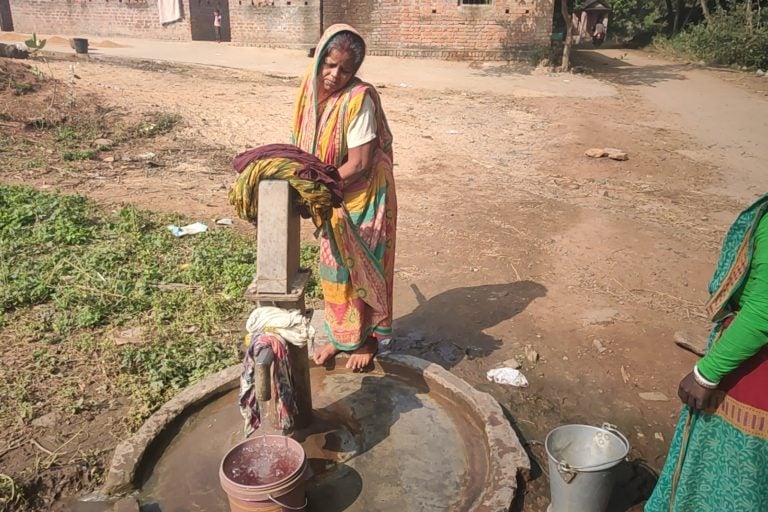
The dense green cover also ensured the presence of biodiversity and elephants began to traverse the forest that was once barren, “We first noticed the movement of elephants in 2005. There was a sense of jubilation among villagers. There were also a constant sighting of snakes and other animals. Birds are now regular here,” said Bikash Mahanty, 40, who resides at the neighbouring Radhamodhobpur village.
The dense trees have also brought down the mercury level in villages and have made the air cooler during summers, “It is comparatively cooler due to the presence of trees. We often sit under the shade of trees during summers and even spend our evenings here. The trees have also prevented soil erosion and farming is not getting hampered due to the mud carried by the rainwater from the mountains,” he added.
Villagers have repeatedly turned down the requests to turn the forest into a picnic spot. “The tourism would no doubt help in promoting the place and also open new avenues of employment but it would do more harm by destroying the environment. Tourists will ignore all norms and use of plastic and other items would destroy its natural beauty. We have ignored the repeated plea to turn this into a tourist spot,” said Dwija Pada Mahanty, the former village head of Manbazar gram panchayat.
Trenches being dug to store rainwater
The state government in collaboration with TSRD is now digging trenches down the mountain to stop the wastage of rainwater and to make the soil nutritious, “The water in the trenches would make the soil nutritious while the overflowing water would be stored in a nearby pond and used for farming. It would also recharge the groundwater,” said Badal Maharana, 43, team leader, Ushar Mukti project, TSRD Purulia Unit.
He further said that around 1.5 feet deep trenches have been dug up in 50 hectares of land after the start of the work last year.
“The trenches would certainly help in storing the rainwater and would be used for multiple purposes. We are also trying to make it an animal corridor to facilitate their movement but the presence of habitation near the forest is a hurdle to the plan. The efforts of the villagers stand as a classic example of how environment conservation is vital for the survival of every individual,” said Niladri Sarkar, Block Development Officer (BDO), Manbazar-1 block in Purulia district.
This post first appeared on Mongabay-India. We welcome your comments at [email protected].